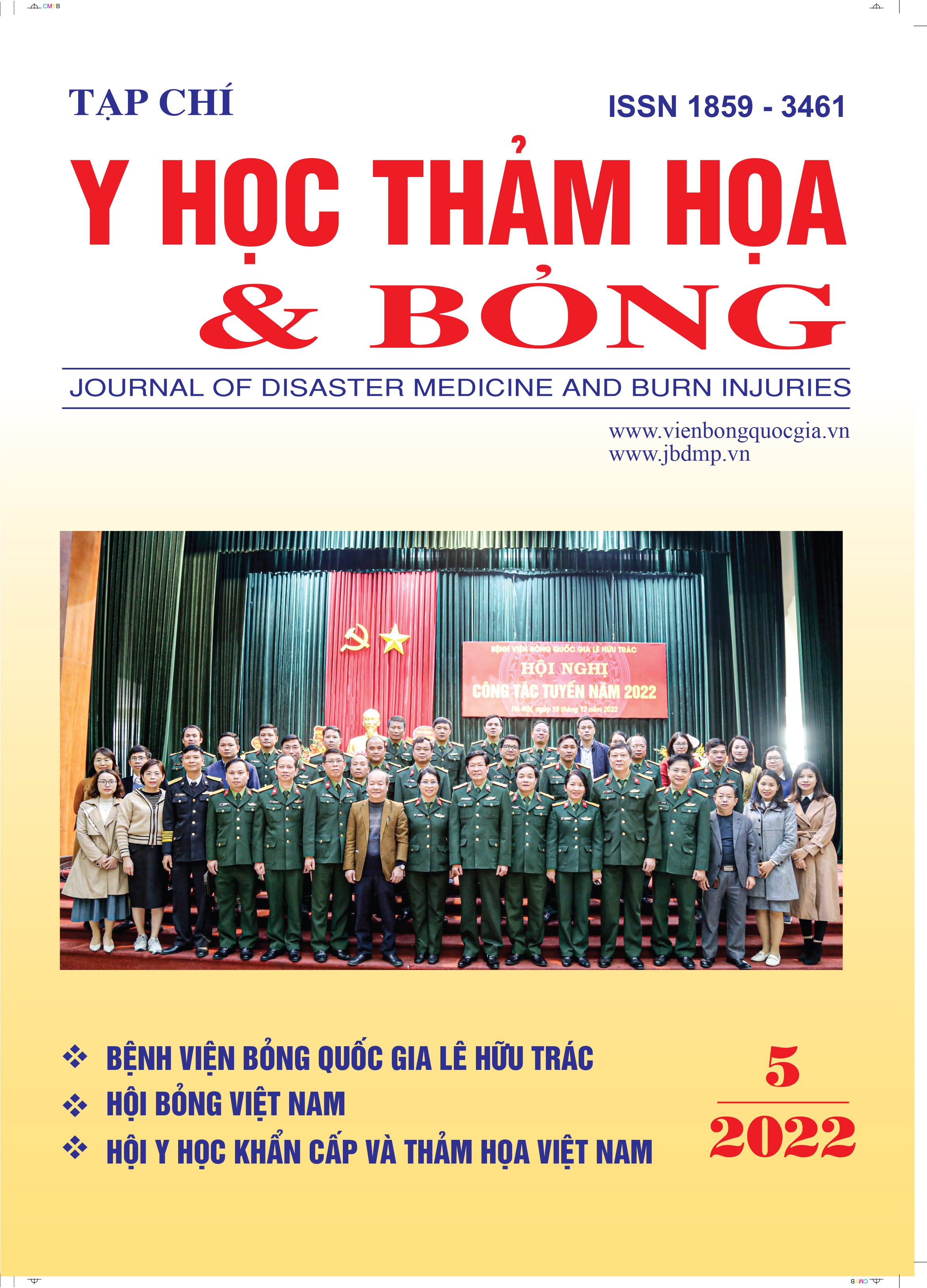Kết quả tái tạo khuyết tổ chức sau phẫu thuật ung thư mũi xoang bằng vạt đùi trước ngoài tự do
Main Article Content
Abstract
Nasal cavity and paranasal sinus cancers are a group of rare cancers of head and neck cancers. Surgery is the main method of treatment for nasal cavity and paranasal sinus cancers. Maxillary defects after oncologic resection can lead to not only functional problems but also cosmetic deformity. Reconstruction of maxillary defects remains the most challenging endeavor for plastic surgeons. The anterolateral thigh free flap has several advantages to becoming the best material to reconstruct maxillofacial defects. This report has introduced some results of reconstruction defects after surgical resection of the nasal cavity and paranasal sinus cancers with the anterolateral thigh free flap.
Article Details
Keywords
Nasal cavity and paranasal sinus cancer, anterolateral thigh, chimeric flap
References
2. Chen S-H, Kuo Y-L, Chang T-Y, Lee Y-C. (2020) Use of Anterolateral Thigh Flap and Fibula Flap in Oncologic Maxillary Reconstruction: An Algorithm Approach. Annals of plastic surgery, 84(1S): S17-S25.
3. Ferriol JE, Llatas MC, Ramírez MF, Mollá CL, Granel NB, Galofre JD. (2005) Colgajo miofascial del músculo temporal: descripción de la técnica y resultados en nuestros pacientes. Acta Otorrinolaringológica Española, 56(6):257-260.
4. Nguyen HL, Tran XP. (2021) Temporalis muscle flap for the immediate reconstruction of oral defects after oncologic resection. Case Reports in Oncology, 14(1):573-579.
5. Mittal G, Agarwal A, Kataria G. (2018) Flaps for Oral and Maxillofacial Reconstruction: Review of Literature and a Clinical Guide to the Clinicians. Asian Journal of Oncology, 4(02):037-042.
6. Sun Q, Soh HY, Zhang Wb, et al. (2021) Long‐term Effect of Individualized Titanium Mesh in Orbital Floor Reconstruction After Maxillectomy. The Laryngoscope, 131(10):2231-2237.
7. Dương Mạnh Chiến. (2019) Nghiên cứu đặc điểm giải phẫu và ứng dụng lâm sàng của vạt đùi trước ngoài tự do dạng chùm: Luận văn NCS, Đại học Y Hà Nội; 2019.
8. Nguyễn Thị Kiều Thơ. (2015) Sử dụng vạt đùi trước ngoài trong tạo hình vùng mũi mặt. Luận án NCS, Đại học Y Dược TPHCM; 2015.


